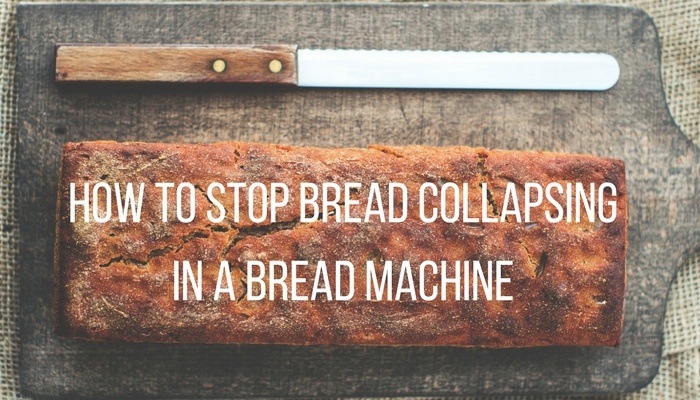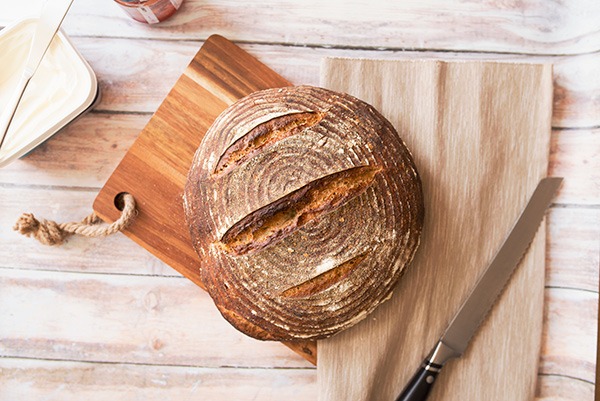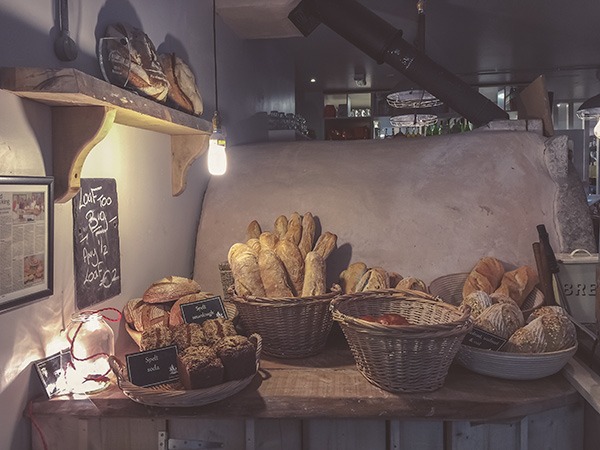Is there anything more frustrating than when your bread collapses in a bread machine? We thought the machine was meant to make baking easy!
Wondering how to stop bread collapsing?
There’s nothing wrong with admitting that you make fresh loaves using a bread machine, and let’s be honest, it’s a lot quicker than doing things by hand. However, one of the most frustrating things about using a bread maker is that it doesn’t always guarantee a perfect rise on your baked doughs.
Even if the bread rises well, there are still times when you may have found yourself faced with a collapsed loaf at the end of your machine’s final baking cycle.
If you’ve ever found that your bread collapses in a bread maker, then you don’t have to give up baking and hide your machine at the back of the cupboard for good.
Luckily for you, we’ve got a few solutions on hand for your loaf sinking problems…
Why Bread Falls in a Bread Machine

There are actually several reasons why bread falls in a bread machine, so you’ll need to do some investigating to find out what’s gone wrong.
First and foremost, check how much liquid you’ve used in the dough before putting it in your bread machine.
When you use too much liquid, you can inhibit or even kill the action of the yeast, leaving your loaf to rise then collapse.
A good way to tell if you’ve used just the right amount is when you’re left with a soft and smooth dough — and not a sticky, wet mess.
When it comes to water and liquid temperature, always think of baby’s bath water or milk. It should never be so hot that it scalds you, nor should it be too cold.
Use a kitchen thermometer to determine how warm the water and other liquids are as you start the dough making process. Anywhere between 90 to 120 degrees Fahrenheit should be fine.
Any hotter than that, and you’ll kill the yeast.
Don’t have a kitchen thermometer? We’d recommend the excellent Kizen Digital Thermometer, suitable for all kinds of baking.

You also need to ensure that you use just the right amount of yeast, and always remember to check the expiration date before adding it with your other ingredients.
See more: the best types of yeast for baking.
When you use too little yeast, your bread won’t rise at all, and too much will make it rise and collapse.
It’s also worth noting that instant yeasts are stronger than active dry yeasts, meaning much less is required to get that beautifully risen loaf.
A loaf collapse could even be something as simple as a measuring error, so always double check your recipe before making your dough and ease up on the salt.
Lastly, make sure you never open the lid during a baking cycle.
What to Do if Your Bread Collapses in a Bread Machine
Sadly, once your bread collapses during baking, there’s no saving it.
The only thing to do is to learn from the experience.
You can try making the bread again just in case you forgot to add an ingredient. Alternatively, you can try making it with just one or two changes. Just be sure not to make too many changes at once as it will make it harder for you to determine the cause of your sunken loaf.

Each time you try something different and slightly tweak your recipe, make a note to easily keep track of any changes. For example, you may have used less liquid and your bread still collapsed.
When making your next batch of dough, make an additional change to the yeast or use less salt.
Eventually, you’ll work out the perfect combination and amount of ingredients — and you’ll have recorded your notes for next time.
Can You Eat Collapsed Bread?
Chances are that if you used commercial yeast instead of active dry yeast AND your dough wasn’t kneaded long enough or at an appropriate temperature then yes – it probably would taste sour and horrible.
If it was a standard bread recipe though and you used active dry yeast, odds are that your bread will still taste okay.
Try letting the dough rise in a bowl covered with plastic wrap or a towel in a warmer place for an hour or two. The outside shouldn’t feel hard when you poke at it anymore and it should have some spring to its bounce back. If this doesn’t work then it’s probably not worth saving.
One to file as Lesson Learned!
How to Avoid Bread Collapses in a Bread Maker
If you’re having trouble with turning out a great looking loaf, check out our step-by-step guide for avoiding bread collapses in a bread machine.
- Firstly, always make sure your yeast is fresh. If you’re unsure of the expiration date, place 1 teaspoon of yeast in a glass bowl with 1 teaspoon of sugar and half a cup of warm water. Give the ingredients a quick mix and leave the mixture to rest for at least 15 minutes. The yeast will only be fit for use if the mixture bubbles and becomes foamy.
- It’s always best to separate the ingredients when adding them to your bread machine pan. Put the water in first, along with any other liquids in your recipe like milk and oil. Then add dry ingredients, such as salt and sugar. Next pour in the flour, and lastly the yeast. This ensures there’s no unpredictable interactions between ingredients.
- Even though you may have followed the recipe to the letter, you need to be aware that different flours have different moisture contents. That means you need to check whether your recipe requires dry or moist flour to determine how much water you need to add to the pan. See our guide to the best bread machine flour. Add extra water or flour little by little until you get the right dough consistency. Remember: you’re looking for soft and smooth.
- When the consistency is correct, your dough should form into one ball that does not stick to the bottom or sides of the pan. Then, close the lid and let the machine get down to some serious kneading and baking.
- Another great tip is to ensure you are using the right size pan for the amount of dough you want to bake. If you’ve got too much dough and it touches the lid of the pan, then it’s likely to result in a sunken loaf.
Take a look at this breadmaker troubleshooting video on more advice for why bread falls in a bread machine:
And there are our tips for what to do when your bread collapses in a bread machine.
What do you do when your bread collapses during baking?
